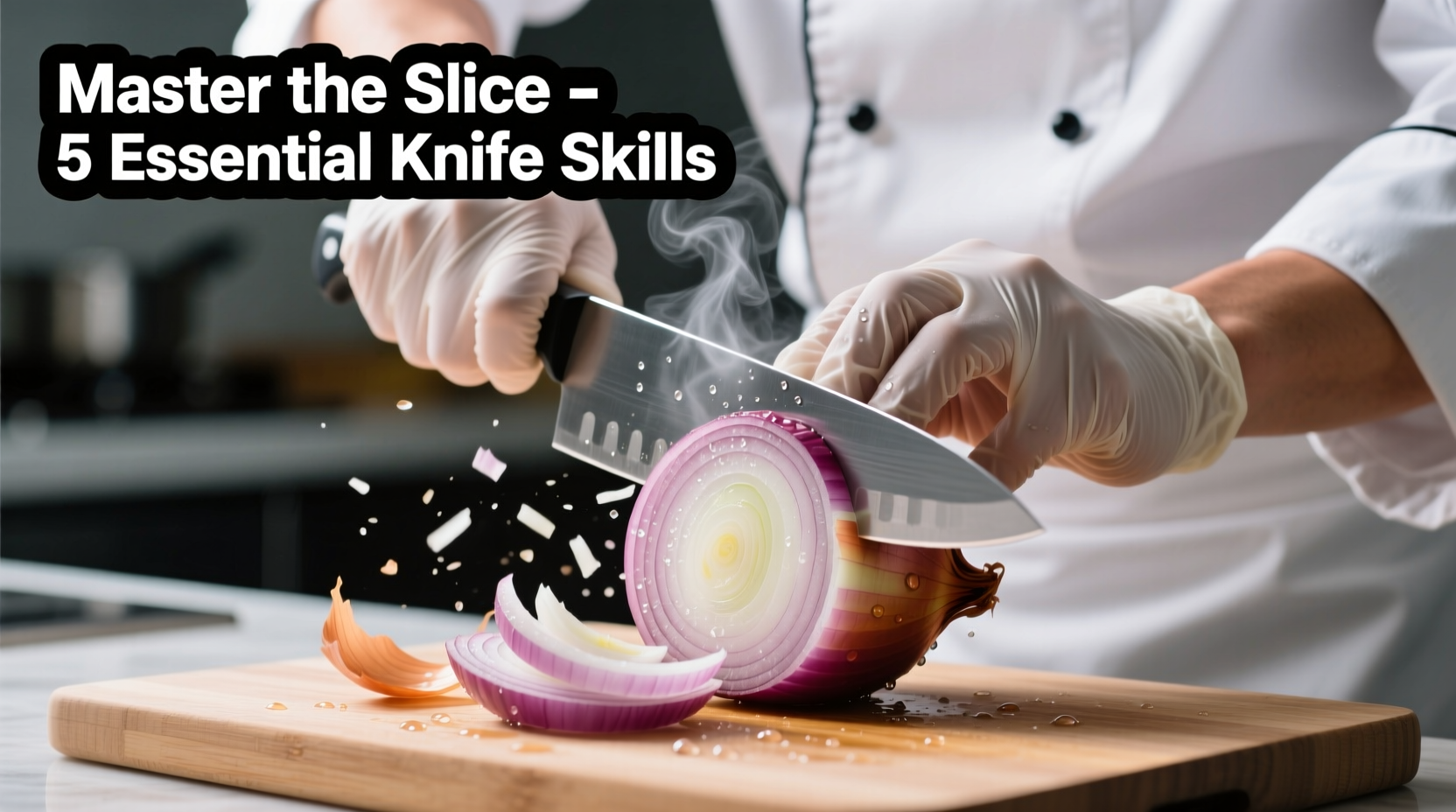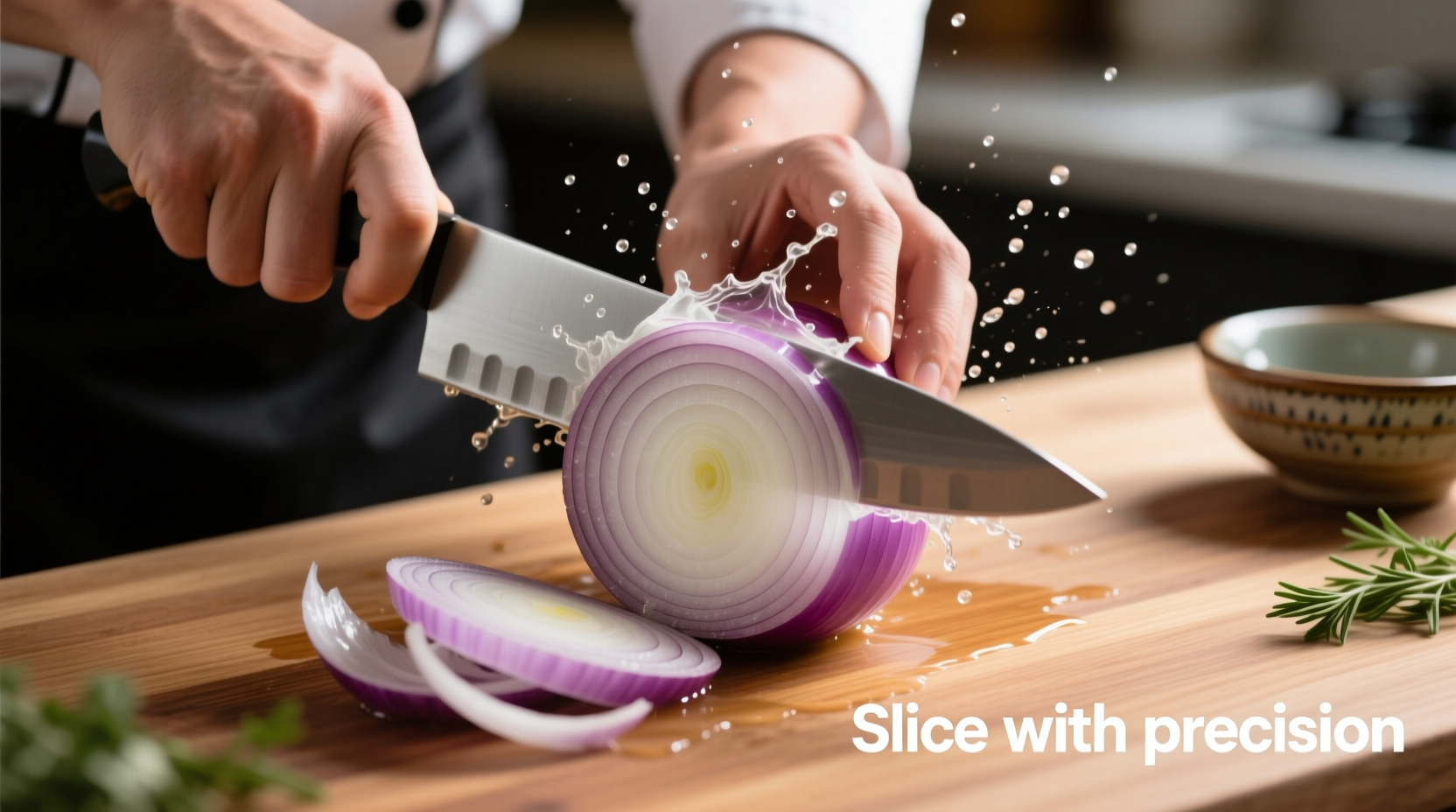The most effective way to slice an onion without excessive tearing involves chilling the onion first, using a sharp knife, and cutting near running water or under a vent. Proper technique includes removing the ends, peeling, making vertical cuts while preserving the root, then horizontal slices before final dicing.
Mastering the art of slicing onions transforms your cooking experience from a tearful chore to a precise culinary skill. Whether you're preparing a French onion soup, dicing for salsa, or creating perfect brunoise for sauces, understanding the science and technique behind onion slicing saves time, reduces waste, and enhances flavor extraction in your dishes.
Why Proper Onion Slicing Matters
Onions form the flavor foundation for countless dishes worldwide, from French mirepoix to Indian tadka. According to the U.S. Food and Drug Administration, improper handling can lead to inconsistent cooking and potential food safety issues. Professional chefs at the Culinary Institute of America emphasize that uniform slicing ensures even cooking and optimal flavor release.
Essential Tools for Perfect Onion Slices
Before you begin, gather these kitchen essentials:
- A sharp 8-inch chef's knife (dull knives crush cells, releasing more irritants)
- A stable cutting board (wood or plastic with non-slip base)
- A bowl of ice water (for chilling onions)
- Optional: Ventilation hood or fan directed toward your cutting area
The Science Behind Onion Tears
Understanding why onions make you cry helps prevent it. When you cut an onion, you break cells containing:
| Compound | Function | Effect on Humans |
|---|---|---|
| Alliinase | Enzyme released when cells break | Converts sulfoxides to sulfenic acid |
| Sulfenic acid | Chemical reaction product | Forms syn-propanethial-S-oxide (lachrymator) |
| Syn-propanethial-S-oxide | Volatile gas | Irritates eyes, causing tears |
This chemical process happens within seconds of cutting. Research from the National Center for Biotechnology Information shows chilling onions for 30 minutes reduces gas release by up to 60%.

Step-by-Step Onion Slicing Technique
Preparation Phase
- Chill the onion for 30 minutes in refrigerator (slows enzyme reaction)
- Remove both ends with a single downward knife motion
- Peel carefully, removing only necessary layers to minimize waste
- Place cut-side down on cutting board for stability
Cutting Phase
- Make vertical cuts toward root end (leave root intact to hold layers together)
- Rotate 90 degrees and make horizontal cuts from stem toward root
- Final vertical slices create perfect dice or slices depending on spacing
- Work quickly near running water or ventilation to disperse gases
Advanced Slicing Techniques for Different Dishes
Professional chefs adapt their slicing technique based on the final dish requirements:
| Cut Type | Measurement | Best For | Pro Tip |
|---|---|---|---|
| Dice | 1/4 inch cubes | Salsas, relishes | Keep root intact until final cut for control |
| Julienne | 1/8 inch strips | Stir-fries, garnishes | Stack slices before cutting for uniformity |
| Thin slices | 1/16 inch | Ceviche, sandwiches | Use mandoline for paper-thin consistency |
| Wedges | 8-16 sections | Roasting, grilling | Leave root intact for structural integrity |
Troubleshooting Common Onion Slicing Problems
"I Still Cry When Cutting Onions"
Solution: Create a physical barrier between you and the onion. The American Chemical Society recommends:
- Wearing swim goggles (creates complete seal)
- Cutting under a kitchen vent on high setting
- Using a sharp ceramic knife (less cell damage)
"My Onion Pieces Are Uneven"
Solution: Maintain consistent spacing between cuts. Professional chefs use the knuckle guide method - curl fingers inward and use knuckles to guide knife at consistent intervals.
"Onions Brown Too Quickly When Cooking"
Solution: Size matters. Smaller pieces have more surface area and caramelize faster. For even cooking, ensure uniform size throughout your batch.
Safety Considerations When Handling Knives
The National Safety Council reports thousands of kitchen knife injuries annually. Follow these safety protocols:
- Always cut away from your body
- Use the "claw grip" with non-knife hand (fingertips curled under)
- Never try to catch a falling knife
- Store knives in protective sheaths or slots, not loose in drawers
Preserving Cut Onions for Later Use
According to USDA food safety guidelines, properly stored cut onions remain fresh for 7-10 days. Follow these steps:
- Place in airtight container immediately after cutting
- Store in refrigerator at 40°F or below
- Do not wash before storing (moisture accelerates spoilage)
- Label with date to track freshness
When to Use Different Onion Varieties
Not all onions slice the same. Understanding variety differences prevents culinary disasters:
- Yellow onions (85% of cooking): Best for caramelizing, hold shape well when diced
- Red onions: More delicate, best for raw applications where color matters
- White onions: Crisp texture, ideal for Mexican cuisine and quick cooking
- Shallots: Delicate flavor, requires finer dice for even distribution
Practice Makes Perfect
Developing consistent onion slicing technique takes approximately 20-30 onions of practice, according to culinary instructors at Le Cordon Bleu. Start with larger cuts and gradually refine your precision. Remember that even professional chefs occasionally tear up - it's part of the process!











 浙公网安备
33010002000092号
浙公网安备
33010002000092号 浙B2-20120091-4
浙B2-20120091-4